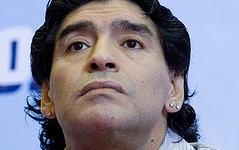“When I first heard about Santi, I thought he was like all the other kids that play polo – rich, privileged and born with a silver spoon in his mouth,” says Nathaniel McCullogh, the English director of the recently released documentary film ‘The Polo Kid‘.
The film follows Santi as he tries to climb the ladder towards the pinnacle of a 10-goal handicap. It moves from Florida to Mexico and then to Argentina, the game’s spiritual home and birthplace of Santi’s polo-playing father to whom the film is dedicated. Miguel Torres was a professional player who emigrated to America in the 1980s and who died during filming.
Q. What’s the story behind the ‘Polo Kid’?
“I played polo as a student while at film school in California and was working in script development when I got approached to make a film about it. I’ve always thought the game was very misunderstood by the public and is seen as being quite elitist. ‘The Polo Kid’ started out as a documentary about the American team competing in the Polo World Cup, but it quickly became the human story of Santi and Miguelito Torres. Their stories were very interesting because they came from the other side of the tracks and bucked the trend. Santi was this 13 year-old prodigy – an incredible polo player.”
Q. How easy is it to film polo, and can you see it becoming a TV sport?
“The problem is the size of the pitch and, at 300 yards, polo can be quite far away from you. I gave up pretty early on trying to tell the story through close-ups of the riders’ faces. But if you’re using broadcast standard cameras, cranes and tall platform it is just about possible. There’s tons of Argentine polo televised everyday and with good commentary and perhaps a slight redefinition of the rules, I think it could work anywhere.”
Q. What with Prince Charles, polo has quite an upper-crust image in the UK – how is it viewed in Argentina?
“There’s a big cultural difference. In Britain there aren’t horses in every next-door field, whereas in Argentina there are enormous farms with a lot of horses to manage the cattle. It would be quite natural for a kid to grow up with a farm nearby and be able to ride with the guys after work, play polo and have fun. In England, if you want to play polo, you tend to buy your way in. In Argentina you don’t have to be wealthy, but you certainly have to be good.”
Q. So how popular is polo among Argentines?
“It’s the second biggest sport after football and if you asked people in the street, most could probably name ten players. Polo stars are treated like gods in Argentina. It’s what the country excels at, and it’s something any Argentine abroad can feed off, as it exemplifies their skill as horsemen. There’s also no social divide with polo in Argentina. Adolfo Cambiaso, the world number one, wants everyone to watch it and once turned up in a Boca shirt to play polo. At the next game there were something like 10,000 Boca fans in the middle of Palermo stadium [the main polo field in Buenos Aires].”
Q. How has Argentina managed to dominate the international polo scene?
“In the States, the padron who pays for the team simply wants the top team and couldn’t give a damn where they come from. They go for Argentine players because they’re the best, and they hire Argentine managers because they know the horses and how the system works. The players bring their families and wives, so there’s quite an entourage involved.”
Q. What is the latest on Santi?
“I saw him in Florida in April. He’s now on four goals and playing with one of the top US teams and will be back in Argentina training in the Autumn. He’s already being paid in a month triple what I earn in a year, and I think the only reason he still goes to school is that they’ll take away his driving license if he doesn’t. He’s now driving around in a massive truck.”

Tom Bruce-Gardyne

Latest posts by Tom Bruce-Gardyne (see all)
- Own Your Piece of the Dream – Vineyard Sharing in Mendoza - August 8, 2012
- Argentina Wine Regions: San Juan - June 19, 2012
- Beyond Steak & Empanadas – Argentina’s New Wave Cuisine - March 20, 2012


 Polo – the Classic Sport of Argentine Gentlemen
Polo – the Classic Sport of Argentine Gentlemen  Polo in Argentina: You Don’t Have to be a Pro to Have a Go
Polo in Argentina: You Don’t Have to be a Pro to Have a Go  The Maradona Show – Argentina World Cup Football Preview
The Maradona Show – Argentina World Cup Football Preview  Messi and Maradona Lead Argentina to 4-1 Victory Over South Korea in World Cup Football
Messi and Maradona Lead Argentina to 4-1 Victory Over South Korea in World Cup Football  Argentina and The Great Messi Debate
Argentina and The Great Messi Debate  2010 World Cup Results: Argentina 1-0 Nigeria
2010 World Cup Results: Argentina 1-0 Nigeria